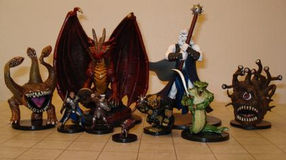Gamestorming #8: Learning Support
- Caity Kelly
- Mar 29, 2019
- 2 min read

After looking over the learning support and user experience assignments for my Game Design course, I began to put more thought into areas of setting up a framework and help features for my audience. Virtually every game has something along these lines--tutorial levels, pop-up commentary as certain game functions become relevant, instructional booklets/pamphlets, or links to digital resources. I find that these are best implemented on an optional basis. The choice to be presented with helpful clues/hints is crucial for a fully satisfying gaming experience as many players may already know what to do OR may want to figure it out for themselves.
However, these supports should not simply be removed altogether. Many theories of learning stress the importance of:
Modeling: Showing the learner how to perform the target behavior.
Coaching: Providing support as they engage in the learning task.
Scaffolding: Giving hints/cues/other supports to guide them through learning.
In a classroom setting, these are fairly easy to imagine--but how do they manifest in the gaming world? This varies from game-to-game. Some set aside a specific area for practice while others manage to weave practice directly into the narratives. Consider these examples:
Kingdom Hearts: As certain abilities or tasks become available, the game pauses and a text/image screen pops up to show the player what to do. This is not my favorite method as it breaks immersion.
Spyro the Dragon Trilogy: The characters themselves tell the player what buttons they should press and how they should handle certain obstacles.
Legend of Spyro Trilogy: Each time the player gains a new set of functions, the storyline indicates that they must go into training with magical training dummies and a dragon mentor before progressing.
Tomb Raider Legend: The game uses a combination of characters explaining what to do and helpful text popups to teach different skills.
Board Games/Card Games: These typically come with a helpful booklet or have hints printed on the inside of the box.
Trading Card Games: These may come with a booklet and/or an instructional DVD.
For my game in particular, I would like to use the more classic approach of an instructional booklet. This would be split into hints for both audiences playing the game purely for fun AND for teachers using the game as a learning activity. I would also like to include links to voicethreads in which I explain a few examples and strategies via audio/PowerPoint format to help scaffold my players.


Comments